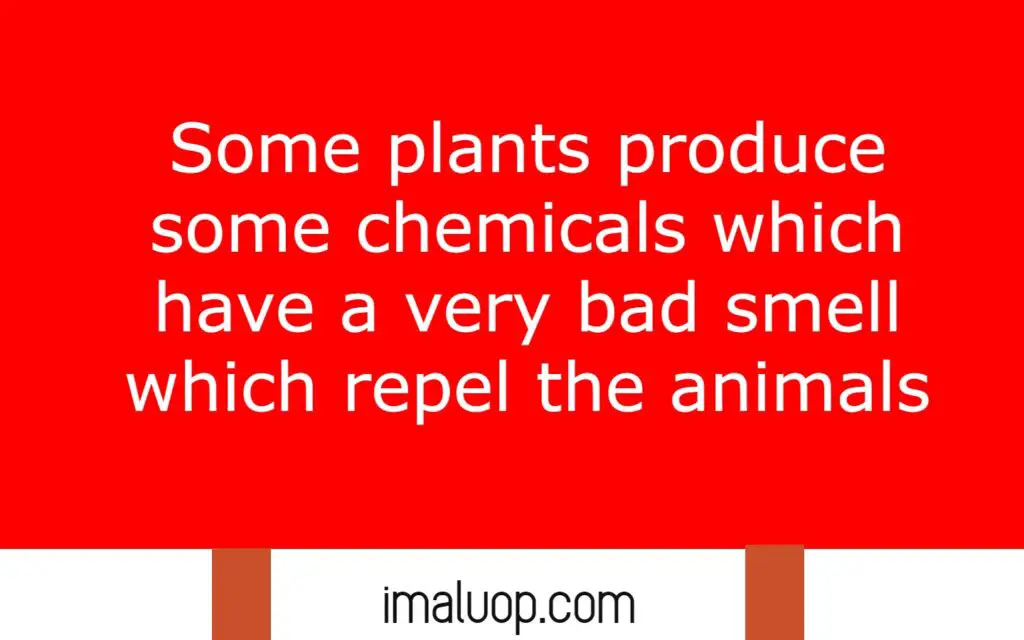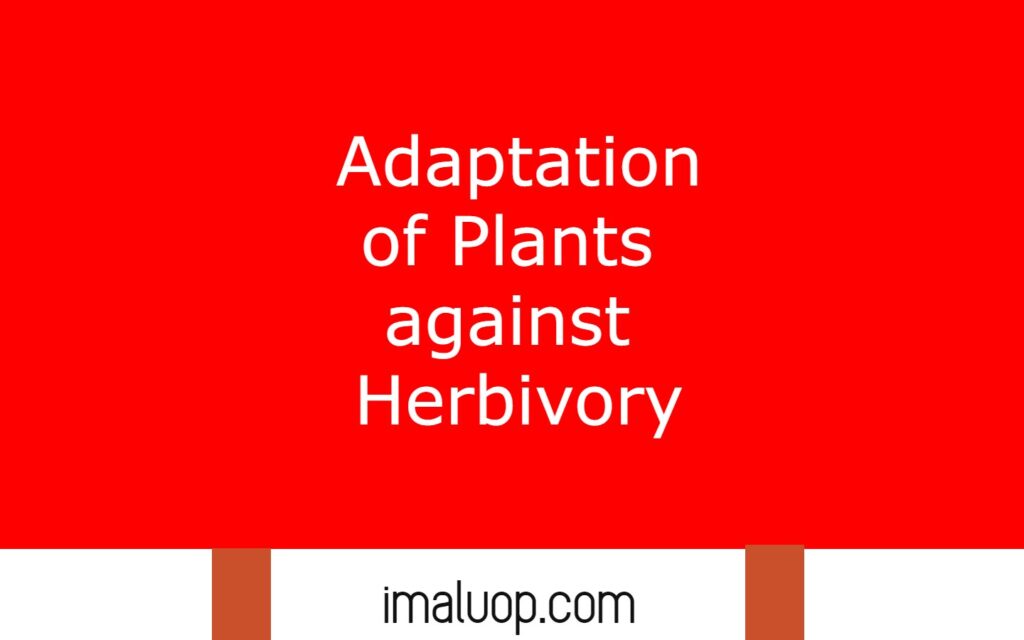Hi, everyone, how are you, today we will discuss different modes of adaptation of plants against herbivory. Plants are producers and herbivores are completely dependent on plants for food but herbivory over a limit is harmful for plants. So plants show different types of adaptation to discourage the herbivory. Otherwise plants will die due to excessive loss of plant parts. Plants show different types of mechanisms, chemical strategies which helps them to avoid excess herbivory.
Mechanical Adaptation of Plants against Herbivory:
Most of the plant parts are covered with waxy cuticle and hard tissue bark, now we have to understand how it gives protection against herbivory. Herbivores always like to eat the delicate parts of the plant body so they do not like the plant parts which are covered with waxy cuticle and bark.

In some plants body parts like fruit are covered by a hard shell which is not easy for most of the herbivores. So most of the animals avoid the plant parts which are covered by hard shells.
In some plants part of the stem turns into pointing hard structure, thorns. Plants part with thorns can hurt the herbivores animals so they avoid taking the plant parts with thorns. Similarly parts of leaves or whole leaves modify into a hard pointing structure called spine which makes the herbivores very uncomfortable.
So animals do not like to graze the plants which have thorns. When animals try to take these plants which have thorns or spine they get damaged physically which makes them avoid such plants.
Some plants like acacia make symbiotic relationships with ants which is very useful for avoiding herbivory. In Acacia stipules have a special structure which is used as shelter by ants and some food material also available here.
So ants make colonies in those parts of acacia and the ants give protection to the plant against different herbivore animals.
Chemical Adaptation Against Herbivory:
At first plants try to protect herbivory by different mechanical methods of protection. But plant adaptation is not limited to only mechanical level plants that produce some chemicals which gives protection against herbivory.
In plants some chemicals are produced which are not necessary for their vital physiological processes but they are produced for defence. Plants produce some secondary metabolites which are very toxic in nature if the herbivore animals take them as food suffering from critical problems even may die in some cases.

Some plants produce some chemicals which have a very bad smell which repel the animals to eat the plants. Some plants produce different types of alkaloids which are bitter in taste and herbivores are not comfortable to eat them.
For example Cassava root is toxic for herbivores because glycol cyanide present in it turns into cyanide which is very toxic for most of the animals. Another example of chemical defence is foxglove which produces cardiac glycosides and steroidal glycosides.
Once an animal takes them as food they suffer from nausea, vomiting, convulsions, hallucinations even sometimes lead to death.
When an animal feeds on plants tissue in those regions becomes open for pathogens. Plants have different mechanisms to repair the damaged tissue due to herbivory. Sometimes plants are able to repair those tissues very quickly, even within minutes sometimes they take a very long time to repair their tissue.
Repair of these tissues is very important because water loss occurs in great amounts through those open tissues and they are prone to pathogen infection. Some plants produce some chemicals when their body parts are damaged.

These chemicals are toxic for herbivores which protects the plant from further herbivory. Sometimes plant body parts are damaged in a manner so that it becomes difficult to repair them. Then plants generally do not try to repair them; they shed those body parts to prevent damage in other parts of the plant.
Resource: Adaptation of Plants against Herbivory
Read More: Adaptation in Animals of Different Environment
Hi Everyone!!! Welcome to Imaluop. Imaluop always try to learn some new and he want to share to other people. Here we will try to learn various topics on Science, specially on Biological Sciences.
